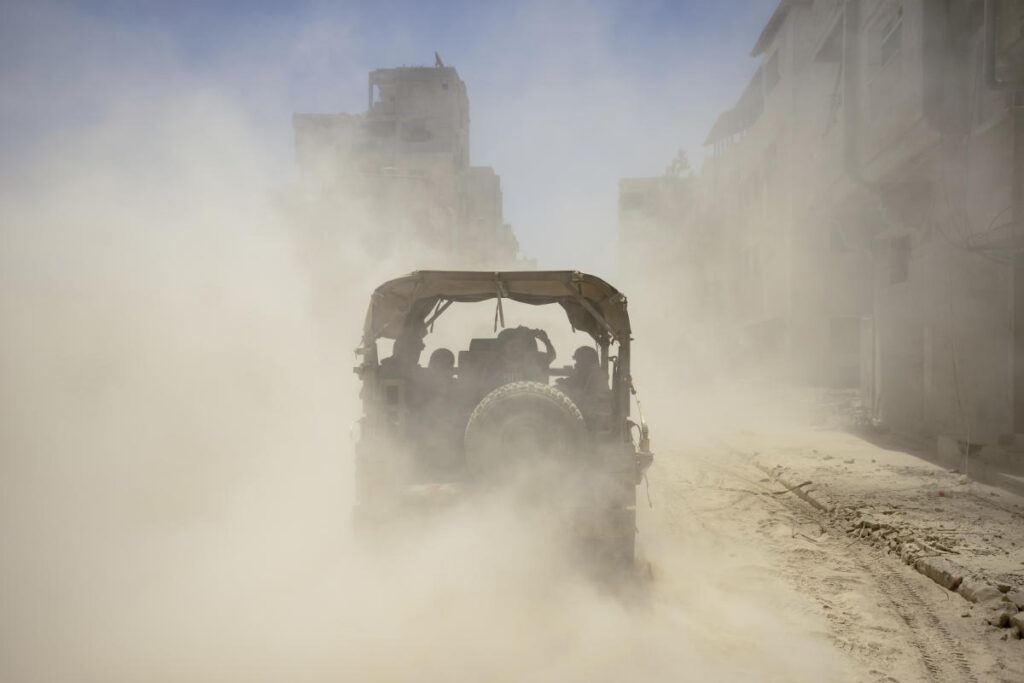RAFAH, Gaza Strip (AP) — Two months ago, before Israeli troops enter RafahThe city was home to most of Gaza’s more than 2 million people. Today it is a dust-covered ghost town.
Abandoned, bullet-riddled apartment buildings have walls blown out and windows shattered. Bedrooms and kitchens are visible from roads strewn with rubble that towers over the Israeli military vehicles that pass by. few citizens to stay.
Israel says it has nearly defeated Hamas forces in Rafah, an area that was designated as a the last stronghold of the militant group in Gaza.
The Israeli military invited reporters to Rafah on Wednesday, the first time international media have visited Gaza’s southernmost city since the invaded on May 6Israel has banned international journalists from entering Gaza since the October 7 Hamas attack that sparked the war.
Before entering Rafah, Israel said Hamas’s four remaining battalions had withdrawn to the area, about 25 square miles (65 square kilometers) bordering Egypt. Israel says hundreds of militants have been killed in the Rafah offensive. Dozens of women and children have also died in Israeli airstrikes and ground operations.
The army says it was necessary to operate with such intensity because Hamas was turning civilian areas into treacherous traps. Eight soldiers were killed in a single explosion last month.
“Some of these tunnels are booby-trapped,” the army’s top spokesman, Rear Admiral Daniel Hagari, said during Wednesday’s tour, standing above a shaft leading underground. “Hamas built everything in a civilian neighborhood, between houses, between mosques, between the population, to create its terror ecosystem.”
An estimated 1.4 million Palestinians gathered in Rafah after fleeing fighting elsewhere in Gaza. The UN estimates that about 50,000 remain in Rafah, which had a pre-war population of about 275,000.
Most have been moved to a nearby Israeli-declared “humanitarian zone” where The circumstances are serious. Many live in squalid tent camps along the beach, where they have little access to clean water, food, bathrooms and medical care.
Efforts to bring aid into southern Gaza have stalled. Israel’s invasion of Rafah has closed one of the two major border crossings into southern Gaza. The UN says little aid can get through the other main crossing — Kerem Shalom — because the route is too dangerous and convoys are vulnerable to attack by armed groups looking for smuggled cigarettes.
On Wednesday, a line of trucks could be seen on the Gaza side of Kerem Shalom, but the trucks were barely moving, a sign that Israel’s promise to keep the route safe to facilitate the delivery of aid into Gaza has not been kept.
According to UN officials, some trucks did travel the route to Rafah, but not without armed guards riding on the convoys.
Israel says it is close to dismantling the group as an organized military force in Rafah. In a reflection of that confidence, soldiers brought journalists in open-air military vehicles along the road leading into the heart of the city.
Along the way, the dangers of relief supplies were made clear by the debris strewn along the side of the road: truck carcasses baking in the blazing sun, dashboards covered with fencing to protect drivers, and empty pallets of aid.
According to humanitarian organizations, Gaza is increasingly at risk of running out of fuel the longer aid deliveries are suspended, as the fuel is needed for hospitals, water desalination plants and vehicles.
“Hospitals are once again running out of fuel, risking disruption to critical services,” said Dr Hanan Balkhy, the World Health Organization’s regional director for the Eastern Mediterranean. “Injured people are dying because ambulance services are being delayed due to fuel shortages.”
As the humanitarian situation worsens, Israel continues its offensive. The battle in Rafah is still ongoing.
After journalists heard gunfire nearby on Wednesday, the soldiers informed the group that they would not visit the beach as planned.
Shortly afterwards, the group left the city, the clouds of dust kicked up by the vehicles temporarily obscuring the vast destruction behind them.
——-
Associated Press reporter Julia Frankel wrote from Jerusalem.

